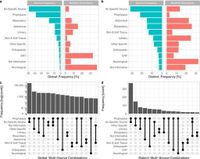On March 21, 2025, a significant breakthrough in understanding the intersection of artificial intelligence and human cognition was published by Google Research and several academic partners. The study revealed that neural activity in the human brain aligns linearly with the internal contextual embeddings of speech and language found in large language models (LLMs) as they process everyday conversations. This groundbreaking research not only reinforces the capabilities of LLMs but also sheds light on how our brains comprehend language.
Conducted in collaboration with renowned institutions such as Princeton University and NYU, the study examined the computational frameworks underlying natural language processing. Unlike traditional models that depend on symbolic representations and syntactic rules, LLMs like Whisper operate using next-word prediction and reinforcement learning techniques. This allows them to produce context-specific outputs based on real-world datasets, encoding the statistical nature of natural speech into a comprehensive multidimensional space.
The research team focused on comparing the internal representations—embeddings—of deep learning models with actual neural activity recorded from intracranial electrodes during spontaneous conversations. These findings highlight the striking alignment between the neural activity in human speech comprehension areas and the speech embeddings generated from LLMs.
In their recent study published in Nature Human Behaviour, researchers pointed out that during speech production, the embeddings derived from the Whisper model were predictive of neural signals in the motor cortex as the subject prepared to articulate their response. The study illustrated how, approximately 500 milliseconds before articulating a word, brain areas associated with language processing, such as Broca’s area, activated in correlation with the speech embeddings. This dynamic process reveals the progression of neural responses from planning and articulation to the subsequent auditory processing of one’s own voice.
These collaborative findings prompt larger inquiries about the computational principles shared between human cognition and LLMs. For instance, both systems seem to engage in predictive mechanisms: in humans, the brain anticipates auditory input before it is articulated, akin to how LLMs forecast the next word in a sequence based on context. These insights suggest a profound connection between biological evolution and computational models, a concept that could enhance both AI development and our understanding of human language.
On a parallel front, the landscape of LLMs continues to evolve with the recent emergence of DeepSeek, a Chinese company that launched an open-source LLM known as R1 on March 18, 2025. This model is particularly noteworthy due to its lower operational cost and power consumption compared to many leading language models currently on the market. As a competitive offering from outside the United States, DeepSeek’s R1 reflects a significant trend in the technology sector toward more efficient generative AI solutions.
DeepSeek’s R1 model allows developers to harness AI for applications with certain performance benchmarks, although it remains behind more advanced models in capabilities. Industry experts suggest that the growth of such economically feasible models paves the way for broader accessibility to AI tools, enabling startups and other businesses to leverage AI for productivity improvements.
Technology investors, particularly those focused on private equity, view the rising efficiency of generative AI models like R1 as a turning point. The emergence of new, lower-cost models signals an ongoing response to the increasing demand for AI technology. For firms like OutSystems, LLMs have been transformative, having developed applications that drastically reduce project timelines from several months to mere minutes using conversational prompts for development.
While the demand for data centers remains robust, especially amid the boom of AI and cloud computing, innovations like DeepSeek’s R1 model represent a response to traditional constraints in data processing. The global infrastructure for data centers has seen skyrocketing demand, with capacity leases reportedly increasing 5-7.5 times faster than historical trends. This comes as investments concentrate on cloud regions that require high proximity to data centers to maintain low latency.
Further emphasizing the impact of LLMs in healthcare, a separate study published on March 21, 2025, focused on optimizing information extraction from electronic health records (EHRs) using LLMs and natural language processing (NLP). By evaluating a dataset of 938,150 antibiotic prescriptions from healthcare records in Oxfordshire, UK, researchers demonstrated remarkable advancements in capturing and categorizing clinical information with machine learning.
Leveraging models like the fine-tuned Bio+Clinical BERT, researchers achieved an average F1 score of 0.97, surpassing traditional models that rely on regular expressions and XGBoost techniques. This innovative study revealed that LLMs could identify specific infection sources from free-text clinical indications 31% more effectively compared to relying solely on ICD-10 codes.
Notably, through categorization of detailed clinical information, LLMs not only show superior predictive performance but also enhance the overarching quality of healthcare research and patient care. The study analyzed data from Oxford and Banbury, with a combined total that included 826,533 prescriptions from 171,460 patients, indicating a high potential for expanding the application of such models in clinical environments.
The implementation of these advanced models underscores a pivotal evolution in healthcare, where traditional methods falter in capturing the nuanced clinical information crucial for effective treatment planning. As healthcare continues to transform with AI integration, the enhancing capabilities of models like Bio+Clinical BERT will play a fundamental role in bridging gaps in existing health data systems.
Overall, the collective advancements showcased by these studies provide a concise overview of the transformative potential of LLMs across various fields, from neuroscience to healthcare and beyond. As these technologies progress, their implications for productivity, efficiency, and data processing capabilities will only continue to grow, reshaping both industries and the understanding of human cognition.






